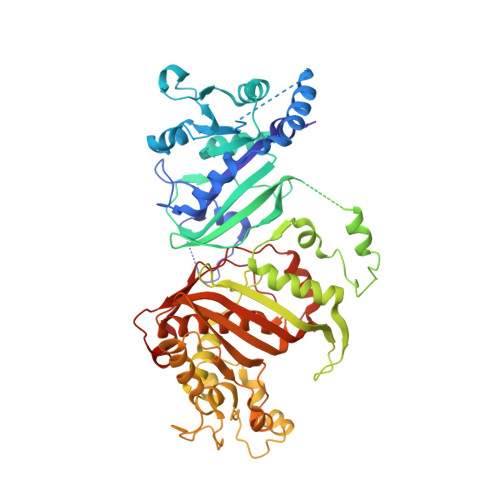6-Hydrophobic aromatic substituent pyrimethamine analogues as potential antimalarials for pyrimethamine-resistant Plasmodium falciparum.
Saepua, S., Sadorn, K., Vanichtanankul, J., Anukunwithaya, T., Rattanajak, R., Vitsupakorn, D., Kamchonwongpaisan, S., Yuthavong, Y., Thongpanchang, C.(2019) Bioorg Med Chem 27: 115158-115158
- PubMed: 31685330
- DOI: https://doi.org/10.1016/j.bmc.2019.115158
- Primary Citation of Related Structures:
6KOT, 6KP2, 6KP7, 6KPR - PubMed Abstract:
The series of des-Cl (unsubstituted) and m-Cl phenyl analogues of PYR with various flexible 6-substituents were synthesized and studied for the binding affinities with highly resistant quadruple mutant (QM) DHFR. The derivatives carrying 4 atoms linker with a terminal carboxyl substituted on the aromatic ring exhibited good inhibition to the QM enzyme and also showed effective antimalarial activities against resistant P. falciparum bearing the mutant enzymes with relatively low cytotoxicity to mammalian cells. The X-ray crystallographic analysis of the enzyme-inhibitor complexes suggested that the hydrophobic substituent at 6-position was accommodated well in the hydrophobic pocket and the optimal length of the flexible linker could effectively promote the binding of the terminal carboxyl group to the key amino acid residues, Arg59 and Arg122.
Organizational Affiliation:
National Center for Genetic Engineering and Biotechnology (BIOTEC), National Science and Technology Development Agency, Pathumthani 12120, Thailand.

















